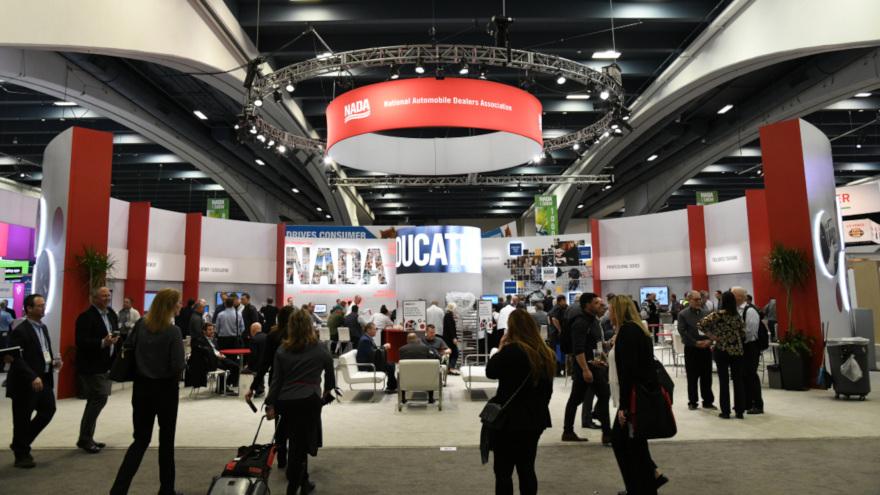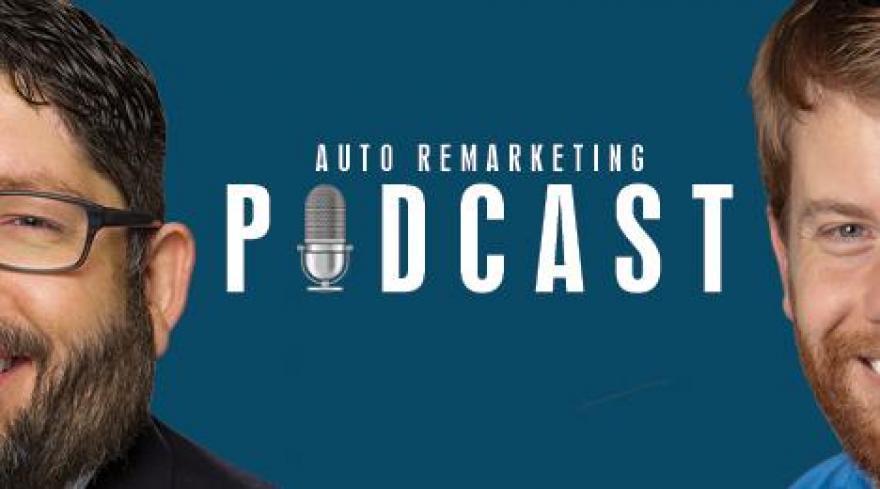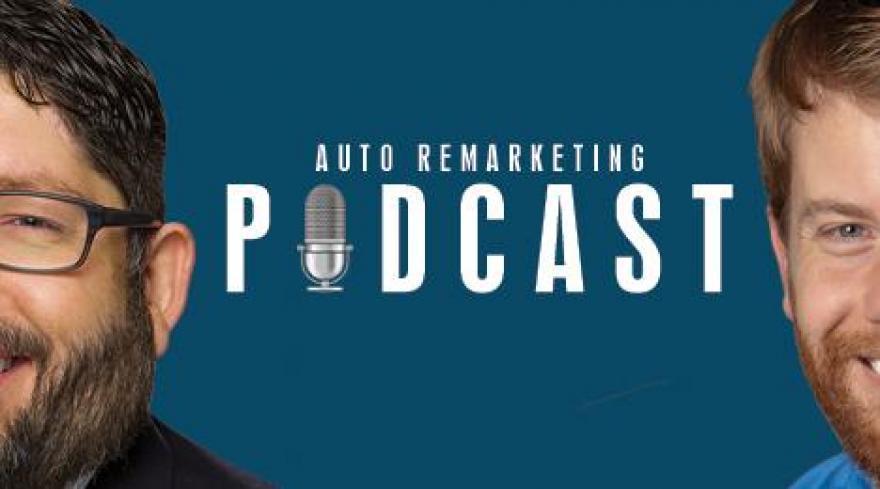For the second time this quarter, two major participants in the financial services and payments spaces made moves to merge.
In January, Fiserv and First Data Corp., announced that their boards of directors unanimously approved a definitive merger agreement. Then last week, FIS and Worldpay also announced that they have entered into a definitive merger agreement to create a single firm where the parts generated more than $12 billion in revenue last year.
Officials highlighted this newest combination greatly expands FIS’ capabilities by enhancing its acquiring and payment offerings and significantly increases Worldpay’s distribution footprint, accelerating its entry into new geographies. Upon closing, officials believe the combined company will be positioned to offer best-in-class enterprise banking, payments, capital markets and global eCommerce capabilities empowering financial institutions and businesses worldwide.
At the closing, under the terms of the agreement, Worldpay shareholders will be entitled to receive 0.9287 FIS shares and $11.00 in cash for each share of Worldpay. Upon closing, FIS shareholders will own approximately 53 percent and Worldpay shareholders will own approximately 47 percent of the combined company. The combination of stock and cash values Worldpay at an enterprise value of approximately $43 billion, including the assumption of Worldpay debt, which FIS expects to refinance.
Upon closing, the combined company’s board of directors will consist of 12 members, seven of which will come from FIS’ board of directors and five of which will come from Worldpay’s board of directors. Gary Norcross will remain as FIS chairman of the board, president and chief executive officer. Charles Drucker, Worldpay’s current executive chairman and CEO, will serve as the executive vice chairman of the board.
The combined company will retain the name FIS and will be headquartered in Jacksonville, Fla.
The transaction is subject to receipt of required regulatory and shareholder approvals and other customary closing conditions and is expected to close in the second half of this year.
The company explained FIS and Worldpay have complementary solutions and services encompassing financial institution issuer services, network and merchant services including global leadership in eCommerce, as well as loyalty and fraud solutions benefiting consumers and businesses. They emphasized clients will benefit from the combined omni-channel payment and multi-currency capabilities, robust risk and fraud solutions and advanced data analytics.
Organizations of all types and sizes are looking for new ways to create more meaningful and frictionless experiences and grow their share of wallet through digital channels. The combination of FIS and Worldpay, two companies that are leading their respective markets in modernization investments, provides clients of both organizations access to a wider portfolio of digital assets to accelerate their revenue growth, streamline their operations and create a better engagement with their customers.
“Scale matters in our rapidly changing industry,” Norcross said. “Upon closing later this year, our two powerhouse organizations will combine forces to offer a customer-driven combination of scale, global presence and the industry’s broadest range of global financial solutions.
“As a combined organization, we will bring the most modern solutions targeted at the highest growth markets,” Norcross continued. “The long-term value we will create for clients and for shareholders will set the bar in our industry and will create a range of new career opportunities for our employees. I have never been more excited about the future of FIS.”
As an industry leading global merchant acquirer, Worldpay is one of the world’s top payment technology companies powering global omni-commerce and providing solutions for merchants, businesses and financial institutions on a global basis. It processes more than 40 billion transactions annually, supporting more than 300 payment types across more than 120 currencies.
“At Worldpay, our focus has always been on delivering more value to our clients and partners and making decisions that achieve our growth and performance objectives. Combining with FIS helps us accelerate the achievement of that, now benefitting from new scale and capabilities that will truly differentiate the company globally,” Drucker said.
“We are proud to become part of one of the financial services industry’s most respected and consistently performing companies, and I am excited about the new opportunities this brings both for the business and our colleagues worldwide,” Drucker went on to say.
Centerview Partners and Goldman Sachs & Co. acted as financial advisers to FIS. Willkie Farr & Gallagher LLP served as FIS’ legal adviser in the transaction.
Credit Suisse acted as financial adviser to Worldpay. Skadden, Arps, Slate, Meagher & Flom served as Worldpay’s legal adviser in the transaction.
Market Scan co-founder and president Rusty West took some time to process the intense activity surrounding NADA Show 2019 this past January in San Francisco. Surrounding the annual event, the automotive financing and leasing software and data provider finalized a pair of partnerships, rolled out three new solutions and interacted with scores of current clients and new prospects.
West acknowledged, “We learn a lot every time we speak with Market Scan customers.” He shared a variety of observations with Auto Fin Journal.
“Our industry is growing at a very rapid pace, and many new automotive digital retailing companies are now discovering the complexities of providing consumers with penny-certain payment data,” West said. “This disconnect can cause friction between the consumer and the dealer because the payments quoted online doesn’t always match the payment terms the dealership can offer. This happens when third-party websites use a ‘cookie cutter’ approach to advertising car inventory and pricing.
“These sites often don’t consider the terms and conditions under which each dealer is able to transact, or the laws and regulations that apply to each dealer,” he continued.
“Another trend we’ve seen involves younger car shoppers, who shop for cars much differently than their parents,” West went on to say. “This is a growing segment that consists of millennials, Gen X and Gen Y consumers who shop based on budget instead of brand.”
“Many dealers have enjoyed the benefits of a booming economy but are bracing for a slow-down. As such, they’re working to conduct business in the most efficient manner possible and generate the maximum available profit from every deal,” West added.
In an effort to help dealerships, finance companies and other industry participants navigate those challenges, Market Scan put an array of strategies in motion.
3 new products
Market Scan introduced three new products during NADA Show 2019 — mProve Diagnostics, mDrive and mPortal.
“We launched Market Scan 30 years ago with the ambition to offer software programs and services that are based on the premise that there is only one scientifically-perfect solution for any conceivable automotive transaction, and any solution that is less than perfect is simply unacceptable. We have not wavered from that position,” West said.
“It is with this backdrop that we are excited to introduce new, game-changing products for the industry,” he continued. “These products complement our existing portfolio of products as well as provide new and very powerful tools for dealers to improve their profitability and give dealers the ability to offer customers an improved and consistent online and in-showroom shopping experience.”
Market Scan explained that dealers have often been unable to substantiate if their sales transactions maximized the store’s profit potential.
Statistically in most dealerships, Market Scan indicated 80 percent of all transactions are spot on with only marginal room for improvement. However, the company said 20 percent of the sales transactions are likely processed using the wrong finance company program, the wrong rebate stack, the wrong structure, or a combination of these. Within those 20 percent of transactions, Market Scan insisted the dealer may sustain tens of thousands of dollars of missed gross profit every month.
In a recent study performed by Market Scan, these losses, when spread across the entire dealership sales volume, amounted to more than $500 per vehicle retailed.
Market Scan highlighted mProve was developed in partnership with StoneEagle, the Richardson, Texas-based supplier of F&I technology for the retail automotive industry. The company explained mProve can perform a thorough review of every sales transaction, and the analysis will show exactly how each deal should have been constructed to improve the gross profit.
West pointed out that mProve is designed to maximize each sales transaction and potentially add hundreds of thousands of dollars in profit each year.
“StoneEagle is a leading supplier of F&I technology and automotive sales performance solutions. When you pair StoneEagle’s SEcureMetrics Advanced F&I Analytics with our database of lender programs and OEM incentives, the output is simply astonishing,” West said.
“mProve can help add hundreds of thousands of dollars to a dealer’s bottom line — without selling more cars. Plus, make the dealership more competitive,” he continued.
“The math is shocking. If a dealer sells 200 cars per month, he may be leaving $100,000 per month on the table — and more than $1 million annually,” West went on to say. “The power of mProve is nothing short of mind-blowing, and we know we have a hit on our hands.”
The company continued that mDrive can gives the customer the real and best choices when shopping for a new vehicle – meeting both the consumer's and the dealer’s terms.
Market Scan claimed mDrive is the only technology that takes everything into consideration to provide a consumer with a list of vehicles that meet his or her criteria and preferences, based upon consumer’s credit score, consumer’s budget, consumer’s driving habits, dealership’s terms and conditions for each scenario, dealership’s lender relationships and manufacturer’s rebates and incentives.
The company added mDrive can enables a dealer’s sales professionals to instantly create a list of all the dealer’s vehicles in inventory that meet those criteria, ranked by each vehicle’s payment value index (PVI or most bang for the buck).
West stressed that providing this information early in the sales process will save dealers and consumers valuable time, a big factor in improving the customer experience.
“mDrive accurately answers the consumer’s age-old question, ‘What can I drive?’ What sets mDrive apart from any other tool or method in the market is that mDrive instantly provides the consumer and the dealer’s sales team an exact list of the dealer’s qualifying inventory based on science,” West said.
“When a consumer’s credit score, budget, number of months and acceptable payment range are entered, mDrive will instantly show a list of every vehicle in the dealer’s inventory that fits the criteria,” he continued.
“Better yet, each of these vehicles meet all of the dealer’s lender published terms for approval — and all of the dealer’s terms and conditions for transacting,” West went on to say. “mDrive helps save a lot of time in identifying which is the best car for the customer.”
Furthermore, the company highlighted mPortal can presents exact payment quotes and ensures consistent pricing quotes across all customer touchpoints
Market Scan’s new mPortal can give dealers full control over all payment quotes provided to customers, eliminating the negative customer experience when online payment quotes are inaccurate or incomplete and not the same quotes they receive when they meet with a sales executive.
The company reiterated this problem exists because the online shopping sites that quote payments on the dealership’s behalf are not respecting the terms and conditions under which dealers are willing to do business.
With more and more consumer-facing companies coming online every month, Market Scan emphasized that it is critical that a dealer manages all outward payment quotes correctly to ensure consistency from platform to platform, as well as in the dealership.
Market Scan’s mPortal can fix this problem by providing the dealership with a single repository where all of the dealer’s selling rules can be housed and managed. The dealer’s list of finance companies, quoting rules, fees, rate mark-ups, bank fee mark-ups, internal packs and calculation settings all can reside in a single location. All the dealer has to do is insist that the dealership’s rules are honored for any payment quoted on any car in inventory.
“Every day we hear horror stories about consumers who are frustrated by their shopping experiences, both online and at the dealership,” West said. “What starts out as a very pleasant, low stress process rapidly turns adversarial when the payments offered on-line are not remotely similar to what the dealer presents the customer in the dealership.
“Every dealership has its unique inventory, lender affiliations and quoting rules — fees, mark-ups, packs, lot-age rules and, of course, profit margins,” he continued. “To calculate an accurate payment, all of these factors must be factored in correctly — in the dealership or via an online technology partner.
“mPortal is very powerful and gives the dealer the ability to take full control and give the customer a consistent buying experience,” West added.
2 industry partnerships
As mentioned in the previous product description, Market Scan and StoneEagle have a strategic partnership to develop tools to improve dealer profitability and competitiveness and drive best practice for their combined 10,000 dealership clients nationwide.
The first product conceived through the Market Scan-StoneEagle collaboration is mProve Diagnostics.
“Partnering with StoneEagle is a strategic business move for our two companies. The real beneficiaries, however, will be our clients who will be completely blown away by the magnitude of the profit opportunities available to them – without selling one additional car,” West said.
“When you pair StoneEagle’s SEcureMetrics Advanced F&I Analytics with our database of lender program and OEM incentives, the output is simply astonishing. We are very excited to be teaming-up with StoneEagle and can’t wait to show dealers what mProve can mean to their bottom line,” West continued.
StoneEagle chief executive officer Cindy Allen added, “When Rusty approached us about partnering with Market Scan, we quickly realized how our combined competencies could be beneficial for our dealers.
“Like Market Scan, StoneEagle has been an industry leader for 30 years. Over that period, Market Scan has provided industry-leading data and calculation solutions to dealers, while StoneEagle has been a leading supplier of F&I technology and sales performance solutions. What mProve offers dealers is truly a game-changer,” Allen went on to say.
mProve Diagnostics shows dealers where profit opportunities could’ve been maximized for each sales transaction – and exactly how each deal should have been constructed to improve the gross profit and competitiveness of the deal.
Meanwhile, Market Scan and Motoinsight also announced they are forming a strategic relationship to further expand their reach across the United States.
Motoinsight will gain access to Market Scan’s database and calculation engine which will include data and programs from banks, finance companies and OEMs. This information will include automotive financial offering, all rebates and incentives, and all taxation.
West insisted this relationship will put Motoinsight in a position to continue to provide its dealers throughout the U.S. with the most comprehensive and accurate data in the industry.
“Motoinsight is a tremendous addition to our list of dynamic technology customers, a fast-growing company that is changing the game for dealers in North America and beyond,” West said. “Motoinsight’s products are data-focused, and I’m proud to say Market Scan has the best, most comprehensive lender program and OEM incentive data in the industry.”
Motoinsight works with automakers and dealerships in the United States, Canada and Australia to redefine automotive retail. The company’s team of engineers, designers and product specialists develop data-powered end-to-end digital commerce solutions that are designed to streamline the vehicle-buying experience for everyone involved.
“The disruption that we have seen in many other retail sectors is now happening in the automotive world,” Motoinsight chief executive officer Andrew Tai said. “We’re proud to be at the forefront of innovation by enabling seamless online and in-store car buying experiences that delight customers.
“Our rapid growth reflects the trust that automakers and dealership groups have placed in our market-leading digital retailing solutions. Market Scan is known for their world-class data, and this partnership will enable us at Motoinsight to deliver the highest caliber of digital retailing technology to our customers,” Tai went on to say.
Ken Kertz summed up FICO’s 2019 U.S. Consumer Survey of Vehicle Finance Perceptions with a point relevant whether a finance company only has a footprint in a couple of states or builds its portfolio from originations nationwide.
“The takeaway for lenders is it’s all about convenience. The less decisions people have to make, the better. The more collaboration, be it online or at the dealership, the better,” Kertz told Auto Fin Journal as FICO released its newest research that looked at how consumers view the financing of their new- and used-vehicle purchases, as well as how vehicle finance companies are currently meeting customer expectations.
The survey determined that there is a disconnect between consumers’ finance preferences for current loans and consumers’ finance preferences for future loans — with the largest gap centered on digital (nearly a 15-point difference). More than a quarter of consumers (28 percent) listed online financing as their first choice for their next loan, an increase from the number of current online borrowers (13 percent).
Conversely, 63 percent of consumers applied for their current automotive loans from the dealership, but only 40 percent said dealership financing would be their first choice for their next automotive loan.
Kertz, who is senior director and practice leader for auto and motorized at FICO, elaborated about the leading points of the latest survey.
“From my side of the story, I think this is a continuing process,” Kertz said. “Consumers are still seeking a frictionless buying experiences. It’s still not quite there yet. They truly want to take control as much as lenders, dealers and OEMs will give them. They still want to feel in the end that they got a good deal, that they’ve made an educated decision both from their standpoint and that the lending institution and the dealership are helping to further that education.
“We’re seeing the digital piece climb up a little bit. It is going to take a few years, maybe three to five, where you can do the majority of your process online, but that’s creeping up. The dealers are obviously still that central focus to do all-in-one shopping experience both for the vehicle and loan,” he continued.
“It’s still revolving around what the lenders can provide the customers from a technology standpoint. When it’s frictionless as possible, the consumer will take advantage of that,” Kertz went on to say. “The technology piece is hard. We hear from our customers that’s it’s going to be another three to five years to remove a lot of that friction to make the researching, the getting the loan, the getting the funding, totally taking place without any human intervention, just go to the dealer and pick up the vehicle.
“For me, the message really is technology is going to help shape the process over the next few years. It’s not there yet. It’s going to take some time. The consumer will take advantage of that technology as much they can give them over that period,” he added.
While dealership financing continues to be the preferred loan option, FICO discovered online loans are gaining traction, which is being driven by the changing consumer expectations. Consumers cited the following top factors for financing options:
• For online financing, consumers most valued convenience, comparison shopping across finance companies and speed.
• For dealership financing, consumers most valued one-stop shopping, possible promotions and discounts and a tie between feeling they might get a better deal and that’s how financing was secured last time.
• For bank or financial institution financing, consumers most valued trusting and liking their bank, believing they get the best rate at their bank and negotiating power.
“With the accelerating adoption of digital, our findings suggest that the U.S., as well as the global market, may be reaching a tipping point where the shift to digital happens rapidly given consumer expectations and the availability of new technology,” Kertz said in a news release.
“Consumers want simplicity and transparency whether financing online or at the dealer, and need to trust the process. Consumers will have a stronger say in how, where and who they do business with, and will greatly influence the emerging business models available today,” he added.
Currently, the majority of the consumers (78 percent) are initiating automotive loan discussions. FICO indicated 95 percent of consumers would consider only between one to three finance companies. They care most about their monthly payment (92 percent), length of term (90 percent) and interest rate (87 percent).
FICO mentioned other significant findings from its new survey included:
• Forty-eight percent of consumers considered only one lender, and 47 percent considered two to three lenders.
• The majority of consumers (78 percent) have to initiate their financing discussions today.
• Ninety-one percent of consumers would accept (or at least consider) an instant vehicle loan offer if that meant they could avoid dealing with a bank or doing extra paperwork.
• The U.S. had the lowest percentage of loans for a new vehicle at 48 percent, compared to 61 percent globally.
• Sixty-eight percent of U.S. consumers rated the financing experience as easy, which tied for the second lowest ranking in surveyed countries behind New Zealand’s 66 percent with the global average at 74 percent.
“Consumers are getting more and more control over the purchasing process. It’s really a consumer empowerment message,” FICO senior manager of solution marketing for risk Mica DuBois told Auto Fin Journal.
“Those lenders and the mix of providers that meet consumers and reduce friction and care about those touchpoints across the entire life cycle, those are the ones who are going to win in the long term. We need to keep doing what's working and close any experience gaps that might exist,” DuBois went on to say.
FICO’s independent research surveyed 2,000 adult consumers across nine countries, including the U.S., Canada, Mexico, Chile, Australia, New Zealand, Germany, Spain and the United Kingdom. The respondents were between the ages of 18 and 64 who acquired a loan or lease on a new or used vehicle within the last three years.
Alex Maritczak recently returned to North Carolina and joined Nick for a conversation about how auto finance companies and technology developers are collaborating on new solutions.
The global auto finance leader at Ernst & Young who also led panel discussions during the Automotive Intelligence Summit described how firms are striving for new developments while also retaining market share and maintaining compliance mandates.
The full episode can be found below.
Download and subscribe to the Auto Remarketing Podcast on iTunes or on Google Play.
You can also listen to the latest episode in the window below.
Catch the latest episodes on the Auto Remarketing Podcast homepage and on our Soundcloud page.
Please complete our audience survey; we appreciate your feedback.
S&P Global Ratings has questions you might have, too. What is blockchain? And why does it elicit feelings of excitement and confusion simultaneously within the structured finance market?
Analysts looked to answers those questions and more and arrived at more potential benefits than risks if blockchain gains a greater presence within the auto ABS market and elsewhere within structured finance.
“Blockchain holds the promise of potential cost savings, new operational efficiencies, and improved transparency and accuracy. With these benefits, the technology could also introduce credit risks to structured finance transactions,” S&P Global Ratings said while introducing its latest report, "What Blockchain Could Mean For Structured Finance," that the firm also shared with Auto Fin Journal.
Analysts set an information foundation first by explaining what blockchain and tokenization are.
S&P Global Ratings described blockchain as a system that facilitates communication between transacting parties while distributing proofs for transaction agreements to all participants. The firm said blockchain is a type of “distributed ledger,” meaning it is a shared database that is replicated and synchronized by a decentralized network.
Analysts emphasized transactions on a blockchain (also referred to as distributed ledger technology [DLT]) are permanently committed to a ledger by groups of transactions called blocks.
The firm added a blockchain network uses ordinary internet connectivity, and users can access blockchain applications via a browser or specialized desktop applications.
“Blockchains incorporate ‘smart contracts,’ defined loosely by IBM as computer code that is stored on a blockchain and executed when defined terms and conditions are met. Smart contracts can enforce a variety of agreements in business collaborations,” report authors said.
“Because smart contracts are programs, it is possible to write them in such a way that they compensate for any features unavailable in the chosen blockchain,” they continued.
Meanwhile, S&P Global Ratings noted that tokenization is the conversion of the value of an illiquid asset (such as property) into a fixed number of liquid tokens, which themselves have a fractional value of the original asset. Analysts pointed out that the perceived value of the token can be limited to the blockchain on which the token is created and managed.
Alternatively, the token can enjoy extended reach if it can be exchanged for other currencies, including fiat money, according to the report.
With those descriptions as a backdrop, S&P Global Ratings arrived at 10 different potential blockchain benefits for securitization. Report authors broke down the possibilities within four different categories.
Originator and assets
— Ability to create larger homogeneous asset pools to facilitate statistical analysis
— Diversification of assets can reduce vulnerability to economic stress
Process
— Set of smart contract templates developed for securitization will enable quick establishment of the trust and the time frame of the securitization process could be reduced substantially
— Data sets are provided in a structured format, enabling easy and quick programable reconciliation
— Full transparency of process setup and the data used
— Improved quality of available data on the blockchain, which could mitigate reporting errors or potential misrepresentation
Execution
— Quicker and more accurate cash flow reporting
— Real-time transparency during execution as any revealed issues would be known
Oversight
— Real-time full transparency of all transactions
— Ability to statistically test health of the process, and predict the outcome
Conversely, S&P Global Ratings also spotted five potential blockchain risks for securitization. Analysts mentioned:
— Legal and regulatory risks
— Operational and administrative risks
— Credit quality of the securitized assets
— Payment structure and cash flow mechanisms
— Counterparty risks
“We believe legal and regulatory risks and operational and administrative risks would initially be the most affected pillars of our framework by the application of blockchain technology to the securitization process,” report authors said.
For more information and to obtain the entire report, visit www.spglobal.com/ratings.
In an effort to bring together vehicle shoppers, dealerships and finance companies, truPayments announced that it has become a participant in the CDK Global Partner Program.
As a member of one of the largest third-party partner programs in the industry, truPayments and its tru Shop-by-Payment are now part of a marketplace of applications and integrations that CDK Global, a leading enabler of end-to-end automotive commerce, developed to help automotive dealers succeed.
“Joining the CDK Global Partner Program will give CDK dealers easy access to the tru Shop-by-Payment product,” truPayments chief executive officer Tarry Shebesta said in a news release.
Shebesta explained tru Shop-by-Payment is designed to provide a unique one-to-one personalized shopping experience, which can connect the right personalized inventory and financing options to each customer based on their unique preferences and profile (including real credit). Shebesta insisted shoppers will discover vehicles they didn’t know they could afford or a payment they didn’t know they could get.
By transforming and personalizing the shopping experience, tru Shop-by-Payment can engage, surprise and delight customers — accelerating their movement through the shopping and buying processes. The company went on to stress tru Shop-by-Payment can enhance dealer CSI scores, online reviews, sales volume and front and back-end gross.
“We’re very pleased to introduce truPayments as the newest member of the CDK Global Partner Program,” CDK Data Services vice president and general manager Howard Gardner said.
“truPayments is a welcome addition to our vibrant program, which provides dealers with a range of partner choices and the assurance that their programs can be seamlessly integrated with our applications,” Gardner continued.
Gardner added the CDK Global Partner Program provides its partners with access to a diverse CDK ecosystem through the ability to integrate with a range of CDK applications and CDK dealer websites.
For registered investment advisers (RIA) and other finance industry leaders who seek knowledge about blockchain and more, Ric Edelman is organizing a new organization.
Edelman, who was named the nation’s No. 1 independent financial adviser three times by Barron’s, recently created the Advisor Blockchain and Cryptoasset Council (ABCC) to advance the industry awareness, knowledge and understanding of blockchain and cryptoassets.
“Our goal is to help financial advisers give their clients advice about these disruptive technologies,” Edelman said. “Through ABCC, financial advisers can learn about blockchain and cryptoassets and be introduced to innovators that offer products and services in this field that are of value to RIAs and their clients.”
For executives and managers still unsure exactly what blockchain and cryptoassets are, Edelman offered this explanation.
“Blockchain technology replaces the traditional ‘trust economy’ with a new ‘authentication economy.’ It eliminates the need for middlemen, and allows financial transactions of all sorts to be conducted more quickly, more safely, less expensively and with greater transparency than traditional methods of commerce allow. Data placed on the blockchain are visible virtually instantly, and cannot be deleted, copied, altered or hidden,” Edelman said.
“Cryptoassets are vehicles used to conduct transactions on the blockchain and include cryptocurrencies, utility and platform tokens, and tokenized securities,” Edelman continued.
Thanks to blockchain and cryptoassets, virtually every type of transaction can be accommodated — from brokerage transactions to concert tickets to marriage certificates — with massive improvements for buyer and seller, albeit at the expense of the broker or middleman,” Edelman went on to say.
Concerned that financial advisers lack understanding about blockchain technology and cryptoassets, Edelman hosted a meeting last June that was attended by:
—Paul Pagnato of Pagnato Karp
—Ray Sclafani of ClientWise
—Alex Potts of Loring Ward
—Jamie McIntyre of Rewire Capital.
Their encouragement led Edelman to create ABCC, and the group has already provided major presentations at Schwab’s IMPACT, TD Ameritrade’s LINC, Inside ETFs and others.
ABCC is now partnering with Barron’s to stage a 1-1/2-day pre-event on March 19-20 at the Grand America Hotel in Salt Lake City, in conjunction with the Barron’s Top Independent Advisor Summit.
The agenda for the Barron’s pre-event includes these sessions:
— Exploration of the blockchain/crypto infrastructure
— Is blockchain/crypto a game-changing revolution, or a bunch of tulip bulbs?
— How to buy and store crypto: Trading and wallets
— Opportunities in blockchain/crypto investment funds
— Portfolio tracking for crypto
— What the regulators are saying
— Bitcoin ETF: Prospects and implications for advisors and investors
— Is crypto an alternative asset class?
— RIAs reveal how they are investing in crypto
To register for the pre-event, go to www.advisorbcc.com.
With credit unions collectively having an immense piece of the auto finance market, institutions are looking to retain that share and even gather a bit more by leveraging technology.
CU Direct chief revenue officer Phil DuPree joined Nick for this episode recorded during NADA Show 2019 where they discussed how credit unions and dealerships are working together.
The full episode can be found below.
Download and subscribe to the Auto Remarketing Podcast on iTunes or on Google Play.
You can also listen to the latest episode in the window below.
Catch the latest episodes on the Auto Remarketing Podcast homepage and on our Soundcloud page.
Please complete our audience survey; we appreciate your feedback.
ACI Worldwide is making quite a payment to Western Union.
The companies announced on Thursday they have entered into a definitive agreement for ACI to acquire Speedpay, Western Union’s United States bill pay business, for $750 million in an all-cash transaction. Officials indicated this acquisition brings together two leading bill pay portfolios in the rapidly-evolving U.S. electronic bill pay and presentment (EBPP) market.
The companies said the transaction is subject to customary closing conditions and regulatory approvals and is expected to close by the end of the second quarter.
A news release noted the ACI and Speedpay bill pay solutions will serve more than 4,000 business customers across the U.S., bringing expanded reach in existing and complementary segments such as consumer finance, insurance, healthcare, higher education, utilities, government and mortgage.
The companies said this will enable the combined business to more effectively serve a rapidly-evolving category as well as pursue additional vertical segments.
Officials explained the acquisition of Speedpay will increase the scale of ACI’s On Demand platform business and will accelerate platform innovation through increased R&D spend and investments in ACI On Demand’s platform infrastructure. ACI will bring together the Speedpay and UP Bill Payment platforms into a unified bill payment platform that will support billions of transactions.
Moreover, officials added the combined ACI and Speedpay team of bill payments experts will bring together decades of vertical experience and payments through leadership, developing and delivering end-to-end solutions that more efficiently address specific business needs and add more value to customers and partners.
“This acquisition reinforces ACI’s ‘any payment, every possibility’ vision and accelerates our ability to capitalize on the growing global payment transaction opportunity over the next five years. It presents a great opportunity for ACI to strengthen and add scale to our On Demand business, and provides fuel for growth and increased R&D investment which will benefit both ACI and Speedpay customers,” said Phil Heasley, president and chief executive officer of ACI Worldwide.
“We are excited to welcome the talented Speedpay team into the ACI family,” Heasley continued. “With decades of proven success, the ACI and Speedpay teams have a deep understanding of bill payments, and the combination of our portfolios delivers an unmatched value proposition.”
With more than 15 billion transactions in 2018, ACI insisted the U.S. bill pay market continues to grow at steady mid-single digit rates. The company noted this growth is driven by factors such as increased consumer adoption of digital and mobile payments, the move to real-time payments and digital subscription billing.
Western Union president and chief executive officer Hikmet Ersek said, “Divesting the Speedpay business allows us to concentrate our resources on our cross-border money movement strategies and monetize a non-core asset for our shareholders.
“Our strategy remains focused on expanding our digital services, leveraging our platform to unlock new cross-border, cross-currency payments opportunities, and generating additional operating efficiencies,” Ersek continued.
ACI mentioned that the addition of the Speedpay business, generating more than $350 million in revenue and $90 million in adjusted EBITDA in 2018, provides compelling financial benefit to ACI and is expected to materially improve net adjusted EBITDA margin in ACI’s On Demand segment.
Centerview Partners is acting as financial adviser to Western Union and BofA Merrill Lynch is acting as financial advisor to ACI. Sidley Austin is Western Union’s counsel, and Jones Day is advising ACI.
As the company announced its new Device-as-a-Service (DaaS) subscription business model, CalAmp chief executive officer Michael Burdiek explained the three main elements within the DaaS space that make it attractive and potentially profitable.
In additional comments sent to Auto Fin Journal augmenting this week’s news release, Burdiek pointed out the revenue opportunities stem from a simplified subscription package which includes the device and a host of services, full lifecycle device management and efficient capital management.
“The DaaS model provides a cost-effective and capital-efficient way for businesses to bring telematics innovations to market,” Burdiek said.
“Subscription-based models allow companies to better manage expenses and optimize operations by providing the option to adopt a range of microservices based on changing business needs,” he continued.
“This allows enterprises to focus on core business while leveraging CalAmp’s industry-recognized IoT and machine-to-machine communications expertise to streamline data insights and deliver best-in-class telematics services,” he went on to say.
At CalAmp, the company highlighted its DaaS business model can reduce the complexity of telematics deployments by offering a subscription-based service, including a telematics device bundled with access to a broad portfolio of connected car micro-services, such as CrashBoxx crash response and driver behavior services.
The subscription model also can enable business customers to leverage more of CalAmp’s research and development investments and full portfolio of telematics services to lower their business costs and drive new revenue streams from subscription services.
The global DaaS market is expected to grow by approximately $8 billion by 2023, according to Market Research Future. CalAmp contends the growing momentum is a result of increased demand for subscription-based services that provide flexible business terms while enabling enterprise customers to bring innovative telematics solutions to market.
Burdiek added that the complexities of delivering an end-to-end telematics solution is often underestimated, leading to operational and customer service issues. A subscription service model can allow enterprises to focus on their core business while leveraging CalAmp’s industry-recognized machine-to-machine communications expertise to streamline the flow of data insights and deliver best-in-class telematics services.
“The Device-as-a-Service model provides a cost-effective and capital efficient path for our business customers to more easily bring our telematics innovations to market,” Burdiek said in a news release
“Subscription-based models allow companies to better manage expenses and optimize operations by providing the option to adopt a range of micro-services based on business needs,” he reiterated.
“We anticipate the increased level of flexibility and seamless digitalization will help us build stronger partnerships and result in greater customer loyalty while driving recurring revenue.”
The new subscription model also can allow enterprises to increase telematics security, ensure vehicle device compatibility and capture valuable data insights that improve customer service, while expanding client access to CalAmp’s CrashBoxx instant crash alert services, driver safety and other connected car micro-services.
Burdiek closed his comments to Auto Fin Journal by emphasizing how CalAmp’s past experience and technology in the auto space help the company to roll out this newest product?
“CalAmp heritage in the telematics space has enabled us to have a deep understanding of our customers pain points of deploying and maintaining telematics solutions,” he said. “With DaaS, business customers will be able to leverage more of CalAmp’s research and development investments and full portfolio of telematics services to lower their business costs and drive new revenue streams from subscription services.”












